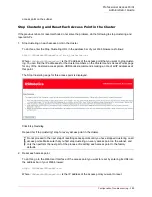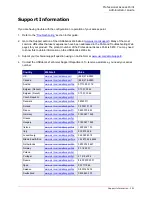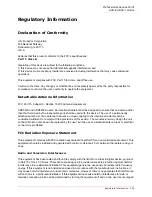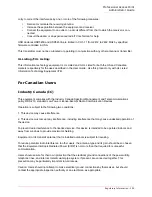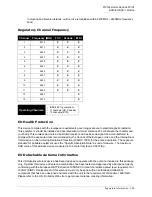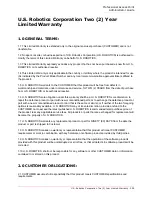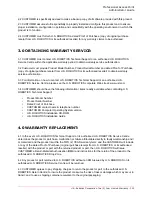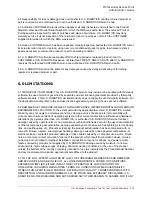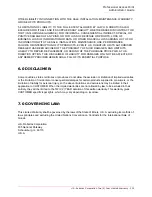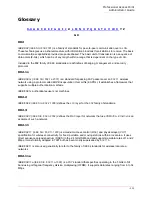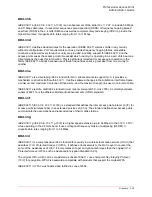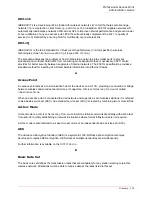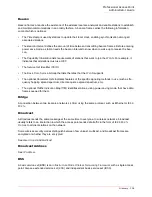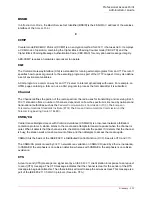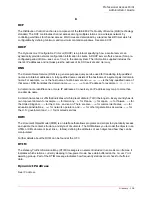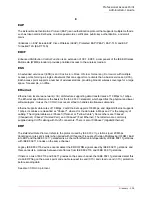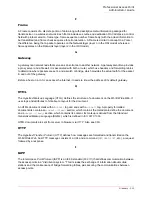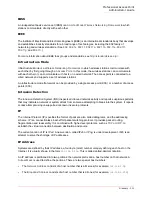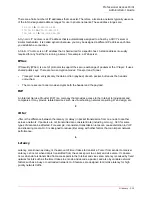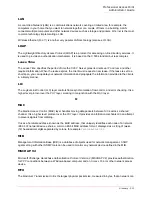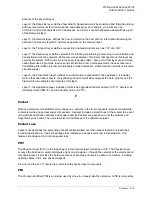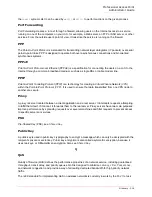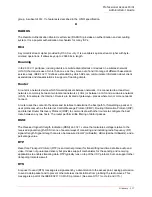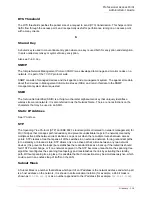
Professional Access Point
Administrator Guide
–303
Glossary
0-9 A B C D E F G H I J
K
L M N O P Q R S T U V W X
Y Z
0-9
802
IEEE 802
(
IEEE Std. 802-2001
) is a family of standards for peer-to-peer communication over a
LAN
.
These technologies use a shared-medium, with information broadcast for all stations to receive. The basic
communications capabilities provided are packet-based. The basic unit of transmission is a sequence of
data octets (8-bits), which can be of any length within a range that is dependent on the type of
LAN
.
Included in the 802 family of
IEEE
standards are definitions of bridging, management, and security
protocols.
802.1x
IEEE 802.1x
(
IEEE Std. 802.1x-2001
) is a standard for passing
EAP
packets over an
802.11
wireless
network using a protocol called
EAP Encapsulation Over LANs
(EAPOL). It establishes a framework that
supports multiple authentication methods.
IEEE
802.1x authenticates users not machines.
802.2
IEEE
802.2 (
IEEE Std. 802.2.1998
) defines the
LLC
layer for the
802
family of standards.
802.3
IEEE 802.3
(
IEEE Std. 802.3-2002
) defines the
MAC
layer for networks that use
CSMA/CA
.
Ethernet
is an
example of such a network.
802.11
IEEE 802.11
(
IEEE Std. 802.11-1999
) is a medium access control (
MAC
) and physical layer (
PHY
)
specification for wireless connectivity for fixed, portable, and moving stations within a local area. It uses
direct sequence spread spectrum (DSSS) in the 2.4 GHz ISM band and supports raw data rates of 1 and 2
Mbps. It was formally adopted in 1997 but has been mostly superseded by
802.11b
.
IEEE
802.11 is also used generically to refer to the family of
IEEE
standards for wireless local area
networks.
802.11a
IEEE 802.11a
(
IEEE Std. 802.11a-1999
) is a
PHY
standard that specifies operating in the 5 GHz U-NII
band using orthogonal frequency division multiplexing (OFDM). It supports data rates ranging from 6 to 54
Mbps.
Summary of Contents for Instant802 APSDK
Page 1: ...Professional Access Point Administrator Guide R46 1224 00 rev 2 0 07 06...
Page 2: ......
Page 4: ...Professional Access Point Administrator Guide iv...
Page 8: ...Professional Access Point Administrator Guide viii...
Page 42: ...Professional Access Point Administrator Guide Basic Settings 42...
Page 52: ...Professional Access Point Administrator Guide Access Points 52...
Page 58: ...Professional Access Point Administrator Guide User Management 58...
Page 62: ...Professional Access Point Administrator Guide Sessions 62...
Page 70: ...Professional Access Point Administrator Guide Channel Management 70...
Page 88: ...Professional Access Point Administrator Guide Neighboring Access Points 88...
Page 96: ...Professional Access Point Administrator Guide Ethernet Wired Settings 96...
Page 120: ...Professional Access Point Administrator Guide Security 120...
Page 128: ...Professional Access Point Administrator Guide Virtual Wireless Networks 128...
Page 134: ...Professional Access Point Administrator Guide Radio 134...
Page 138: ...Professional Access Point Administrator Guide MAC Filtering 138...
Page 152: ...Professional Access Point Administrator Guide Quality of Service 152...
Page 160: ...Professional Access Point Administrator Guide Wireless Distribution System 160...
Page 164: ...Professional Access Point Administrator Guide Time Protocol 164...
Page 170: ...Professional Access Point Administrator Guide SNMP 170...
Page 290: ...Professional Access Point Administrator Guide Configuration Troubleshooting 290...
Page 298: ...Professional Access Point Administrator Guide Regulatory Information 298...
Page 328: ...Professional Access Point Administrator Guide Index 328...

